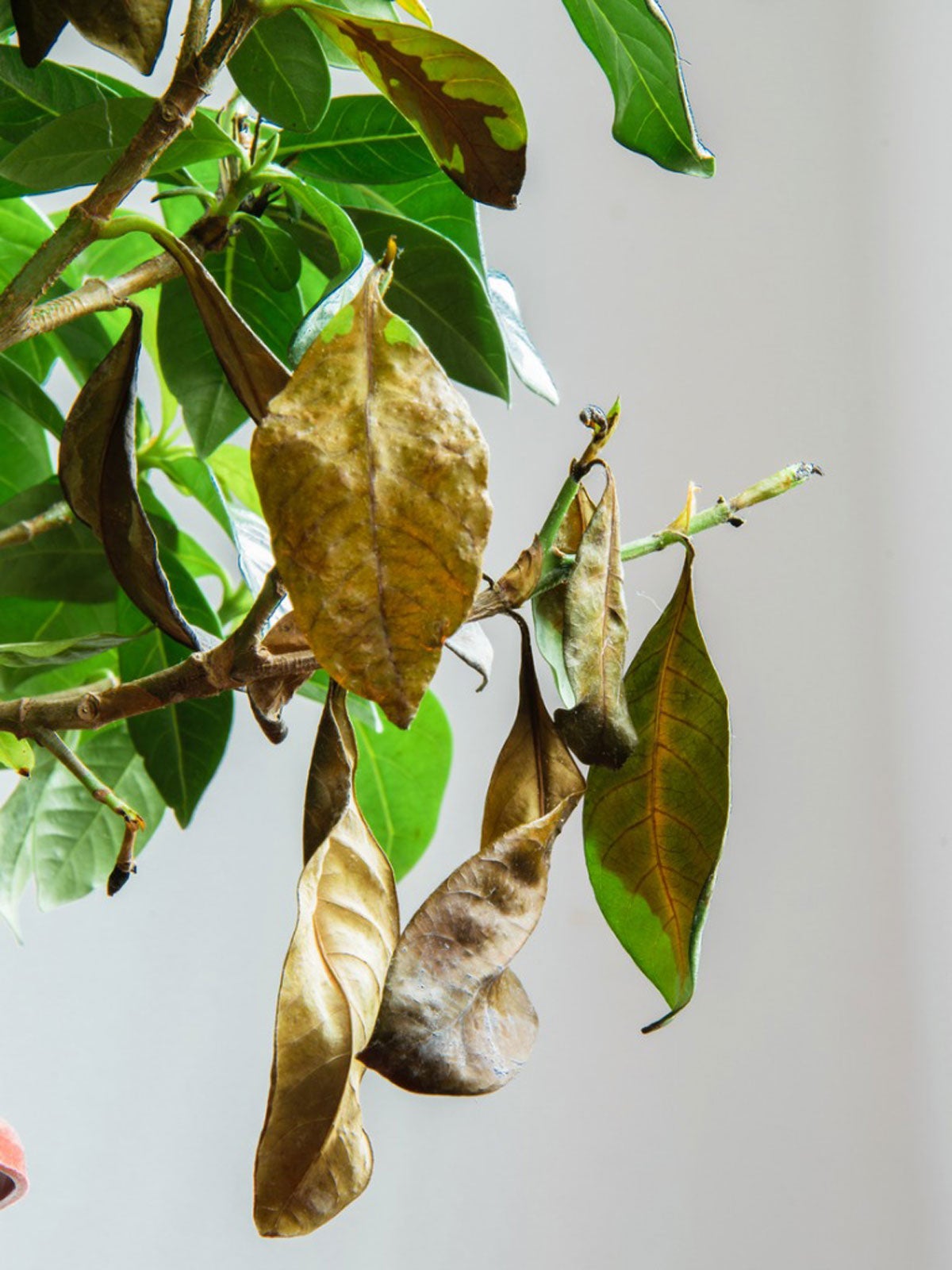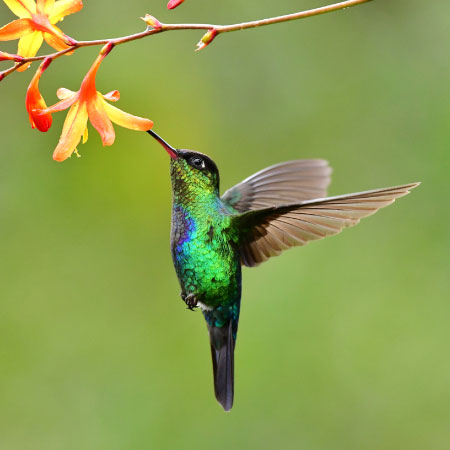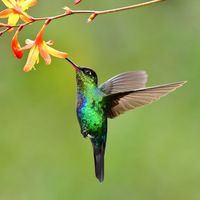Gardenia Leaves Turning Yellow? Here’s Why & How To Fix It
Seeing yellowing leaves on a gardenia can be disheartening, but the condition can be easy to fix by paying attention to what keeps this plant happy.

Caroline Bloomfield
Gardenia Leaves Turning Yellow: Common Causes & Easy Fixes
If you’re concerned about yellowing leaves on a gardenia, you’ve come to the right place. A staple of the southern landscape, heavily fragrant gardenias remain among the most beloved plants for the ornamental garden. With their prolonged flowering period and attractive evergreen foliage, it’s easy to understand why gardenias are a perennial favorite.
Most gardeners consider gardenias easy to grow, but it’s crucial to monitor beds and borders for potential problems. Yellowing leaves, also known as chlorosis, is quite common in gardenia plants. Determining the exact reason why gardenia leaves are turning yellow requires some careful diagnosis.
Why Are My Gardenia Leaves Turning Yellow?
Yellow gardenia leaves can be caused by a variety of factors. Sudden changes in cultural conditions are usually the culprits. These changes can include fluctuations in temperature, soil moisture levels, and even the availability of nutrients. In gardenia plants, yellowing may also indicate disease or insect pressure.
Common Causes for Yellowing Leaves on a Gardenia
Rapid changes in weather are most often the cause of yellowing leaves. Cooler nighttime temperatures or brief periods of cool weather are likely to trigger minor yellowing.
Over or underwatering can also lead to a change in the appearance of a gardenia’s foliage. Also, check your garden soil for incorrect pH levels or deficiencies in iron and magnesium. These issues can be resolved quickly.
Yellowing gardenia leaves is a common sign of disease. Fungal disease, rot, and other issues that affect the plant may first manifest as a change in appearance. Nuisance insects may also cause gardenia leaves to turn yellow. Aphids, whiteflies, and spider mites are of particular interest, though these seldom cause severe damage to established gardenia plants.
How to Fix a Gardenia With Yellow Leaves
Solving soil issues will remedy most problems with gardenias. These include routine irrigation, using a high-quality fertilizer, and monitoring of pH levels in the soil.
Sign up for the Gardening Know How newsletter today and receive a free copy of our e-book "How to Grow Delicious Tomatoes".
Most successful gardenia growers recommend an inch of water per week. Soil should be kept moist but not soggy, so be sure to use well-draining soil.
Gardenias are happy with 5.0 to 6.5 pH values, so after testing your soil, you may find you need to make amendments. They love acidic soil and may enjoy a bit of coffee now and then.
While several diseases that affect gardenias are only minor, some more severe infections may lead to the loss of plants.
How to Prevent Gardenia Leaves Turning Yellow
The best way to prevent yellowing of gardenia leaves is to establish a consistent care routine. This will help to ensure that their ideal conditions for growth have been met.
Gardenias need soil that drains well, sufficient light, and ample space between each plant for adequate airflow. Using proper irrigation techniques will further help to prevent the occurrence and spread of disease within the garden. Talk to your local extension service agent or garden center expert for recommendations before applying chemicals to your gardenia.
Frequently Asked Questions
Should You Remove Yellow Leaves From a Gardenia?
Most yellow leaves on gardenias will fall from the plant on their own. However, removing affected foliage can help to maintain a more attractive appearance. Yellow leaves that are believed to have been caused by disease should be removed immediately. Infected leaves and other debris should then be removed from the growing space.
What Does an Overwatered Gardenia Look Like?
Gardenias that have been overwatered will often begin to yellow. Should waterlogged conditions persist, growers can expect the leaves to wilt and begin to drop from the plant prematurely. In severe cases this will lead to the development of root rot, various fungal diseases, and the complete demise of plants.

Shari Armstrong is a guest writer for Gardening Know How.
- Caroline BloomfieldManager of Marketing Communications

